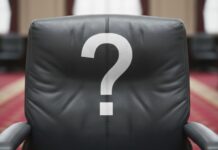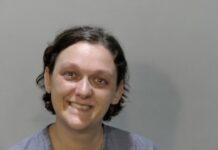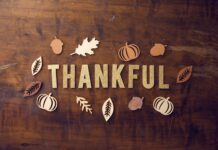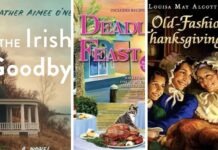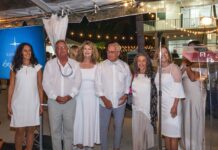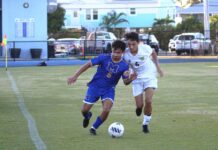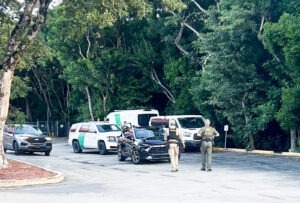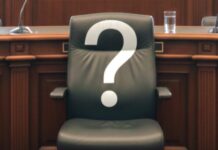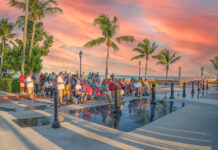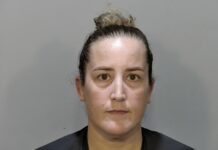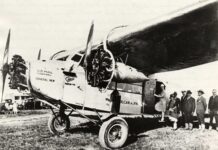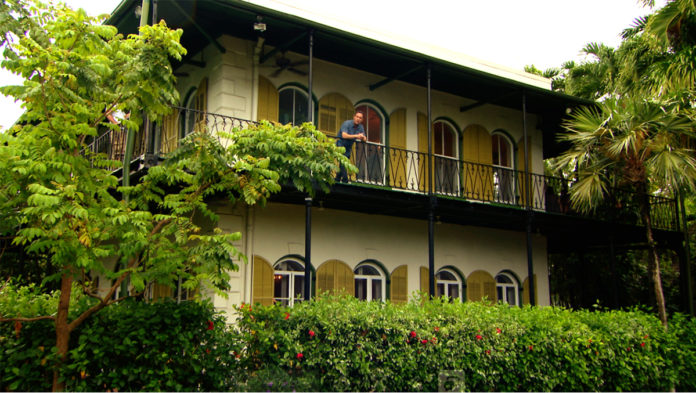
Fox and Friends’ Brian Kilmeade granted the Keys Weekly another behind the scenes look at his most recent episode of Fox Nation’s history series, “What Made America Great.”
When we last met with Kilmeade, who remains one of the most recognizable faces on the national media stage, and boasts five New York Times best-selling books, the Fox television and radio host had just completed a historic exploration of Truman’s Little Whitehouse.
Kilmeade returned recently to Key West and visited The Ernest Hemingway Home & Museum, as well as the Florida Keys’ beloved historian, Tom Hambright, at the Key West branch of the Monroe County Library. Kilmeade, the intrepid news man, also found his way to some of Hemingway’s most popular hangouts, such as Sloppy Joe’s Bar.
During his most recent visit, the Keys Weekly’s Britt Myers caught up with Kilmeade on the recent success of “What Made America Great,” and whether the Southernmost City will be a regular installment on upcoming segments of Fox Nation’s hit history show.
KW: The last time we spoke, we covered a lot of your personal life and your career journey, so we’ll stick to what’s happening with the show and your time here in Key West. However, you are a sports guy and you nailed your Super Bowl prediction with the Tampa Bay Bucs last time. So we have to ask, who’s going to win the NBA Championship with four teams about to kick off the semifinals?
BK: I watched the Hawks blow out the Knicks in their series and I think they are better coached. Even though I think they have the most indifferent fans in sports, I believe the Hawks are going to win it all
KW: As a diehard Hawks fan, I hope you’re right. And this is coming from a non-indifferent fan [laughing].
So let’s talk about you. The last time we spoke it was your second trip to Key West and now we’re on your third. Does this mean you’re going to become a regular and are you going to be one of our adopted celebrities here in Key West?
BK: I’ll talk to my people (laughing). You won’t have to ask me twice. I’ve never seen a place that bleeds vacation. Everywhere you go in Key West, you get a slice of life. I could not be more impressed. And obviously the history. You’re not just going to an island. You’re going to a place that has Truman’s Little White House, Ernest Hemingway’s house and even to get there is a bit of history with the bridges that link the islands. So from an outsider’s perspective, I just love the feel of it.
KW: Tell us about the show, “What Made America Great” on Fox Nation. What sort of feedback have you been getting?
BK: Logistically it was challenging during the time we first came to Key West. We’ve got producers and cameramen who aren’t comfortable flying [due to COVID]. And then you’ve got to find people who are OK talking on camera and some of those people are obviously wearing masks and don’t want people looking at it in two years and asking, “Why are those people wearing masks?” So it was challenging. But I think this is our most diverse season.
KW: What makes you say that?
BK: We have Little Havana, the most successful immigration story since the pilgrims. The way they came here to this country and what they’ve done is phenomenal. I think people are going to love that story. We have Hemingway with you guys. And we have Greenbrier, which is this elite club in West Virginia.
KW: Interesting. Can you tell us a little more about the Greenbrier episode?
BK: That dates back to the turn of the last century. It had Sam Snead as the golf pro and Lou Gehrig as a regular, and it ended up being a place where we’d bring our congress should the Cold War turn into a bombing war. Every day until 1991 they were ready to house 535 lawmakers should we have to evacuate Washington. And it was top secret. And then to have Hemingway, a great American, to mix in there. I thought it was one of the most intriguing seasons, definitely.
KW: I think when people see guys like you on TV, they don’t realize how much work it is, but it also seems like you’re just having fun. Your passion for history really comes out on camera. Is it as fun as it looks and does it feel like work?
BK: Yeah, what they did is, or when you first start out, you book the shoot. You book the camera, you’ve got a budget. You go out there, do the interviews, you log it yourself and then you put together the feature. Now, I go out there and I study. I write the standups, I write collaborations, I make sure everyone’s OK with the text and then do the interviews. And then I go back to work and do Fox and Friends, the radio show and whatever they need me to do. The hard work is done by the producers. They book the shoot, handle my travel and make sure I get back on time. They line up the interviews, so I literally can focus on the content. The laborious work is done by the producers, so this is what I mean by it’s not work. I really do have the easy part.
KW: As we get into Hemingway, I have to ask, did you watch the Ken Burns documentary and did it inspire you in some way?
BK: Totally incidental. I only watched one episode of Ken Burns. He’s a genius, no doubt about it. But six episodes at three hours each, it’s difficult. I will say this, to prove we were thinking ahead of time, when we went to book Truman, I said let’s stay an extra day and I’ll do Hemingway. But the Hemingway House could not work with our schedule because they had another crew there. We didn’t know until we arrived again that it was Ken Burns’ crew. But it couldn’t have been better. The Hemingway House, they were like, ‘come early, you’ve got the run of the place.’”
KW: We’ve talked about your passion for history dating back to your childhood. When did your interest in Hemingway begin?
BK: For me personally it was the movies when I was a little kid and I remember seeing “The Old Man and the Sea.” And my dad was always passionate about it so I always had that connection to him. So I just thought, wouldn’t it be nice to get back to the Keys and tell a great American story.
KW: When you research Hemingway, are you able to appreciate his greatness without judging his flaws? How do you balance that story?
BK: You always hear about how this man that had everything killed himself. What would make him kill himself? And then you find out he was in World War I and World War II and you’re like “Is this guy an author? Is he an adventurer? Is he a fisherman?” And the way he went through wives and women. I could not believe there’s so much dichotomy and interest and so many shades of this person. And it was a life of consequence. I don’t look to judge him. I just sought everything that he did and I thought “How do we capture him?” We couldn’t do it all so we chose his time in Key West.
KW: As you said, there were so many shades to Hemingway’s life. What fascinated you about his life in Key West?
BK: I focused on the Keys because I think that’s the most glamorous part. And you guys embrace his legacy instead of running from it and that makes it easier, just like you guys embraced Truman. But I love the person, the writing, the movies that were made after, his patriotism and his roles he played in the wars. And I love the fact that he wouldn’t write about anything he didn’t live. So, when you’re reading it, whether it’s fiction or nonfiction, you know it’s authentic. He lived it.
KW: Is there anything you learned from your tour at the Hemingway Home or during your conversation with Tom Hambright that surprised you about Hemingway?
BK: There’s a lot of disagreement on who he was. Most everyone agrees he was a great writer. There’s some people who go, “He wasn’t a great husband” or “He wasn’t a great dad.” Or “He drank too much.” But I heard a lot of both sides. He didn’t walk on water, that was clear. Obviously he had a bit of a struggle growing up, I get it. But I think looking at his life, he was born almost like a prodigy. He had this unique talent. So as much as you would say he was a guy that like hanging out at the bar and he would do these other things, I was amazed at the discipline he showed.
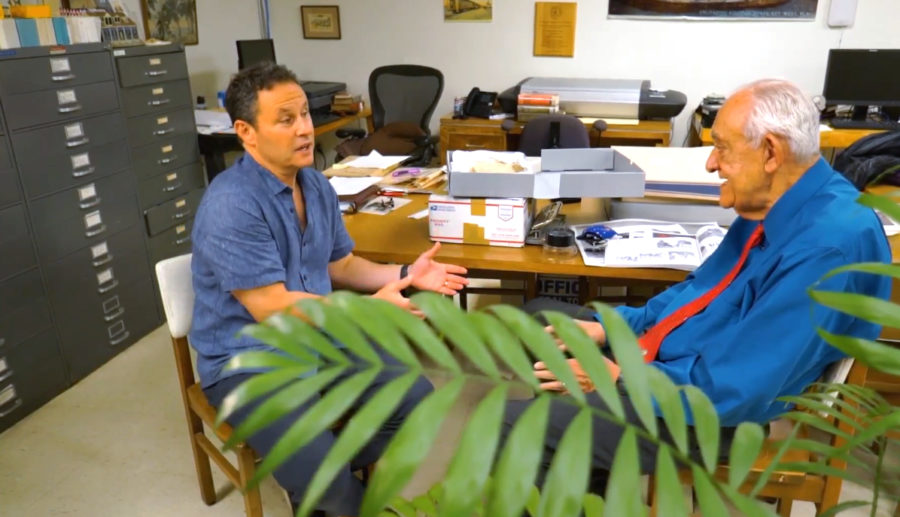
KW: How do you separate the myth of Hemingway from the man he really was? Or are they the same?
BK: He would write for a certain amount of hours on certain amount of days. And to go the library in Key West and see his handwriting on the manuscript so he becomes a human being instead of seeing him as someone in a movie or a documentary. And you see also his brilliance. If someone could drink that much and hang out that much, you would think there would be some lack of discipline and some lag in his profession. Maybe later in life there was, but in his heyday, I hate to say it, but he knew how to balance it. So as rich as his vocabulary was and as vivid as his imagination and memory was, I was just so amazed he was so direct. He wanted to get to the point. He didn’t need to impress you. And that’s how he organized his life. So it’s almost like he’s doing that for the reader. He’s like, “I’m busy, you’re busy, so let’s get on with this and on to other things.”
KW: You cover a lot of historical figures. Does Hemingway compare to anyone?
BK: Teddy Roosevelt’s house is about fifteen miles from my house and I always thought of him as an outsider. So I started thinking there are similarities and sure enough, he (Hemingway) worshiped Teddy Roosevelt. So he was probably channeling him too. Here’s a guy who’s multifaceted, a hunter, a war hero and I’m thinking a lot of that overlaps. And maybe with Roosevelt growing up an asthmatic kid without many friends and then he overcompensates by being the outdoorsman and ruffian and boxing in the basement of the White House. And there’s Hemingway and maybe he grew up and you see some of the things his mom had him in and you see him overcompensating by being a man’s man for the rest of his life. I see a lot of parallels there.
KW: The Hemingway House really opened up to you and the crew, but you also caught up with our beloved librarian and historian, Tom Hambright. How did you two connect?
BK: The way everyone at the Hemingway House welcomed us in and helped us with our schedule and understood we were in the middle of a pandemic and we had to be pliable and adjust … it was great. And then we walked through the town and people starting telling us about this librarian who’s a historian, so we called him and he biked down and met us at the library. What other small town in America would do that? It’s people who care about their city and care about Hemingway’s legend. You don’t have to be that nice and it’s just a great town.
KW: You fittingly end the episode at Sloppy Joe’s Bar. How did you get one of the busiest bars in the country to clear a bar out for filming?
BK: It’s interesting. The night before, so we got there and we walked the town real quick and everyone is back and feels like Key West is back. So I tried to walk into Sloppy Joe’s and someone stops me and says, “excuse me, there’s a line,” (laughing). So the next day I come back and said I would love to come back and do a standup here and one of the guys recognized us because he watches Fox. And then the gates just opened up. The management, bartenders and customers opened up. If you guys in Key West weren’t so great, if the management at Sloppy Joe’s so fantastic, if the library wasn’t so amiable and if the Hemingway House wasn’t so flexible, we wouldn’t have been able to do it. I just hope it works for everyone.
